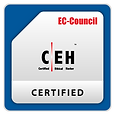
SERVICES WE PROVIDE
Learn more about what we do and view our services below.
IT Networking
Today, in the digital world, it is of paramount importance to provide safe and cost-efficient connectivity to your customers and employees. Coverage and un-interrupted services become extremely important for business to grow and be trusted. Find out about our products and services that will provide help your business to stay safe, be relevant and sustainable.
Corporate Application
Our range of innovative and functional products with its unique selling point for corporates will enhance productivity, service excellence, communications and time management. Find out more to know what works for your organization. Talk to us.
AWARDS







SYSTEMS INTEGRATION

Steps of the System Integration Process
1. Determine The Requirements
The team must gather a list of requirements that their integrated system needs to address. This outline should mention any operations, business processes, or insights that the company wishes to improve. With this information, the developer can build a user-friendly system with the necessary components to enhance business performance.
3. Design The Infrastructure
Once the analysis is conducted and approved, the team begins building the system's architecture. Detailed blueprints layout the design of how the various systems will integrate and aggregate data.
Why the need for a
System Integration Process?
System integration (SI) connects multiple subsystems so they can function together and share information to enhance supply chain management. From internal operations to communicating with third parties, data transparency is essential for efficient execution. In other words, businesses with several systems can use an integrator to create a centralized sharing network that gives users access to all information.
Implementing an integration solution eliminates the need to manually enter data across various software, saving time, labor costs, and reducing the risk of human error. This open network of data sharing enhances communication throughout a company's departments,
optimizing operational efficiency.
2. Conduct Analysis and Due Diligence
After the requirement list is complete, the team and customer will review it to determine the feasibility of designing software that will adequately address all of the concerns. At this phase, the customer must be prepared to make compromises as they may suggest further functions that they believe the company will eventually need.
Although it may initially cost more to add features, if the customer skimps on software design and later needs better functionality, they must invest
in a whole new system. Therefore, it is more
cost-effective to over prepare for the business's potential needs.
4. Develop The Management Plan
After the infrastructure is designed, the team must collaborate with the other parties to calculate risks, create a timeline, and determine alternative options. This preparation will ensure operations can continue to run smoothly even if the team runs into issues or require an extension.
5. Design System Integration
Designing the system integration is the most work-intensive and time-consuming phase as it outlines the process, system tests, methods, and logistics. This step's success relies heavily on how well the previous steps were performed and if all necessary details were covered. With proper integration, all systems will seamlessly integrate without losing any data during transfers.
6. Implement The Solution
After the software solution is designed and tested for quality assurance, it is ready to be implemented. When the integration process is complete, customer can begin training their employees on the new system.

7. Perform Maintenance Checks
Perhaps the most overlooked step is performing routine maintenance on system integrators. Customer should run scheduled diagnostics to ensure that no new errors have arose and the functions do enhance their performance. If any problems arise, the team can be contacted to fix technical issues or add more components.

Security researchers found a new service called Dark Utilities that provides an easy inexpensive way for cybercriminals to set up a command and control (C2) center for their malicious operations.

A late-stage candidate encryption algorithm that was meant to withstand decryption by powerful quantum computers in the future
has been trivially cracked...

Offensive Security has released Kali Linux 2022.3, the third version of 2022, with virtual machine improvements, Linux Kernel 5.18.5, new tools to play with, and improved ARM support.

LET ' S TALK
Send us a message and we'll get back to you shortly.

